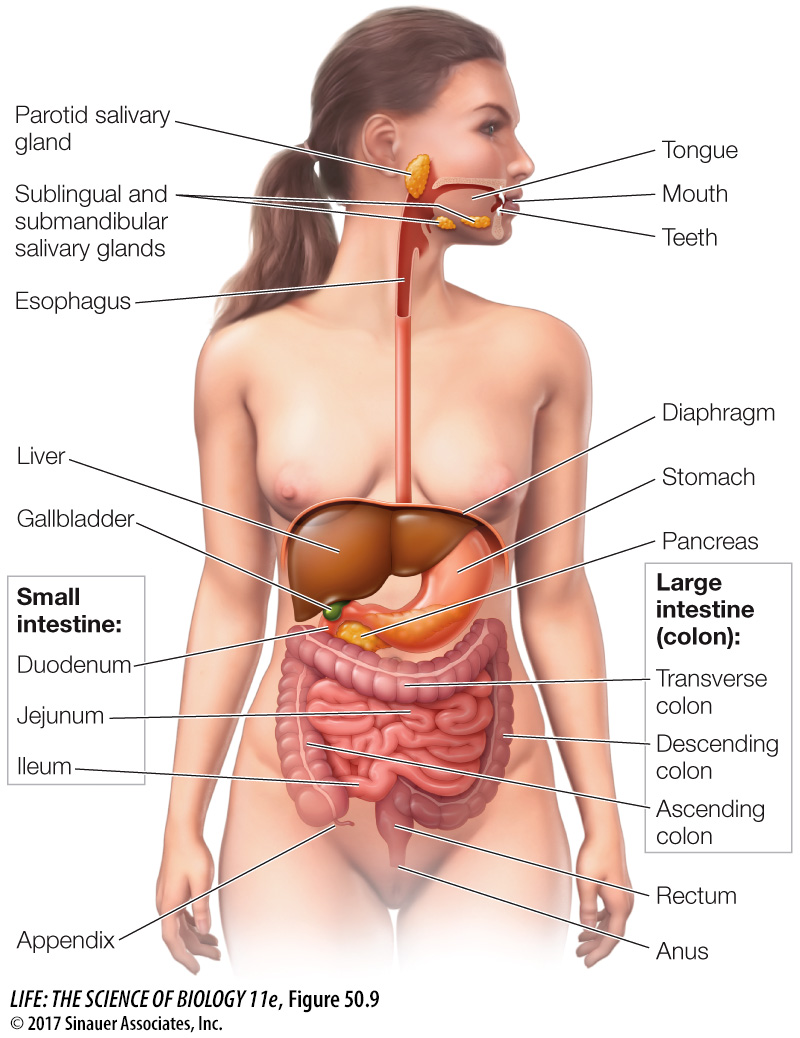key concept
50.3
The Vertebrate Gastrointestinal System Is a Disassembly Line
key concept
50.3
The Vertebrate Gastrointestinal System Is a Disassembly Line
Digestion in vertebrates occurs in the gastrointestinal system, which includes a tubular gut running from mouth to anus and several accessory structures that produce secretions that play important roles in digestion (Figure 50.9). In this section we consider three important processes of this system: the movement of food through it, the sequential steps of digestion, and the absorption of nutrients. We use as our primary example a typical vertebrate, the human.

Activity 50.4 The Human Digestive System
focus your learning
The structure of the vertebrate gut supports its digestive function.
A variety of chemical and physical processes take place in different parts of the digestive system to efficiently break down food into forms that the body can use.
Herbivores do not produce the cellulases needed to digest cellulose in their plant diet, and thus require microbiota to carry out this task.